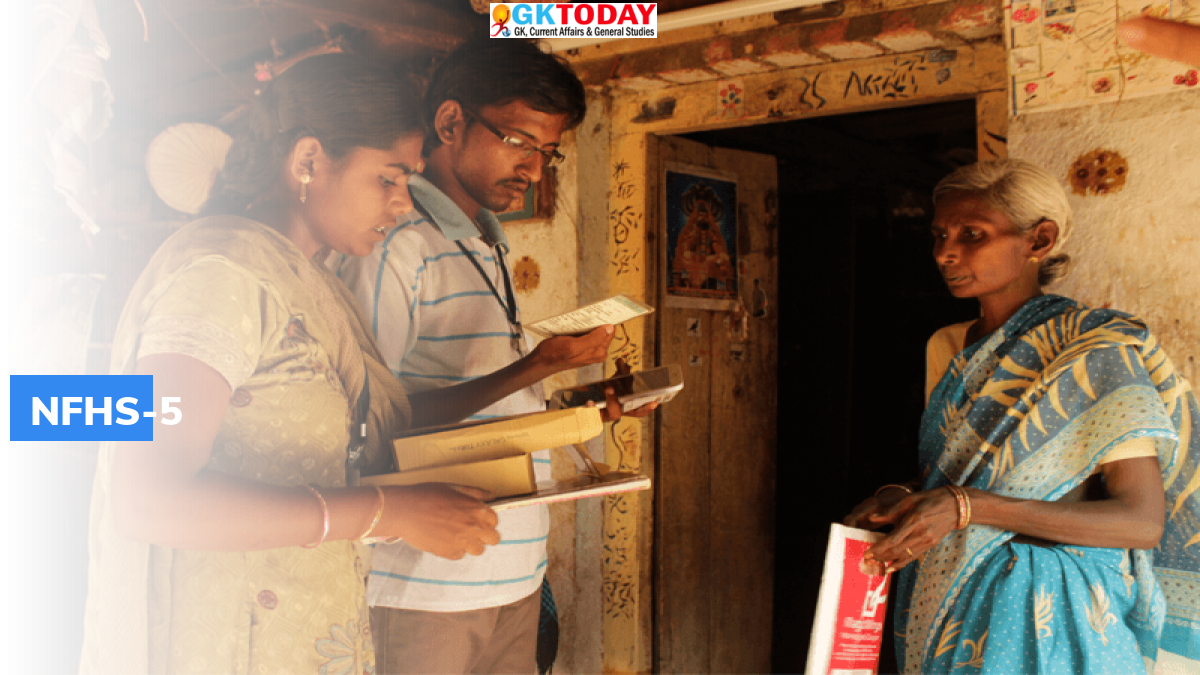National Report of 5th round of NFHS-5
Recently, the Union Health Minister released National Family Health Survey (NFHS)-5 data.
When was the survey conducted?
The National Family Health Survey (NFHS) was conducted between 2019 and 2021.
What did the report say regarding marriage age?
- National average of underage marriages has come down.
- According to NFHS-5, 23.3% of women surveyed got married before attaining the legal age of 18 years, down from 26.8% reported in NFHS-4.
- However, in some states like Punjab, West Bengal, Manipur, Tripura, and Assam, underage marriages increased.
- West Bengal and Bihar are the states with one of the highest rates of underage marriages in the country. Underage marriages are lowest in Jammu and Kashmir, Lakshadweep, Ladakh, Himachal Pradesh, Goa, Nagaland, Kerala, Puducherry, and Tamil Nadu.
- Tripura has seen the largest jump in marriages under the legal age of 18 years for women. And biggest gains in improving legal marriage have been seen in Chhattisgarh.
What did the report say about contraceptive usage?
- The knowledge of contraceptive methods is almost universal in India. But the use of modern contraceptives for family planning is only 56.4%
- Women who are employed are more likely to use modern contraception.
- Contraceptive usage increases in communities and regions that have seen more socioeconomic progress.
- Usage of modern contraceptives also increases with income.
What is the total fertility rate?
Total Fertility Rate (TFR) is the average number of children that would be born to a woman if she were to live to the end of her child-bearing years and give birth to children in alignment with the prevailing age-specific fertility rates.
What is India’s Total fertility rate (TFR)?
Total Fertility Rates has declined from 2.2 (NHFS-4) to 2.0 (NFHS-5) at the national level. Thus, the TFR is currently below the replacement level of fertility.
What is the replacement level of fertility?
Replacement level fertility is the level of fertility at which a population exactly replaces itself from one generation to the next.
How many states in India have a fertility rate above the replacement level of fertility?
Only five states are above the replacement level of fertility of 2.1. These five states are Bihar (2.98), Meghalaya (2.91), Uttar Pradesh (2.35), and Jharkhand (2.26) Manipur (2.17).
What is the National Family Health Survey (NFHS)?
The National Family Health Survey (NFHS) is a large-scale, multi-round survey conducted on a representative sample of households throughout India.
What information is provided by the National Family Health Survey (NFHS)?
NFHS provides state and national information for India on fertility, infant and child mortality, the practice of family planning, maternal and child health, reproductive health, nutrition, anemia, utilization, and quality of health and family planning services.
What are the goals of the National Family Health Survey (NFHS)?
NFHS has two specific goals:
- To provide essential data on health and family welfare for policy and program purposes.
- To provide information on important emerging health and family welfare issues.
Who is designated as the nodal agency?
The Ministry of Health and Family Welfare (MOHFW) designated the International Institute for Population Sciences(IIPS) Mumbai, as the nodal agency, to provide coordination and technical guidance for the survey.
Month: Current Affairs - May, 2022
Category: Reports & Indexes Current Affairs


